Inhabited since 782 BC (!), Yerevan is one of the oldest continuously occupied cities on earth. It is the largest and capital city of Armenia and Yerevan is a fascinating place full of parks, monuments, museums and theatres.
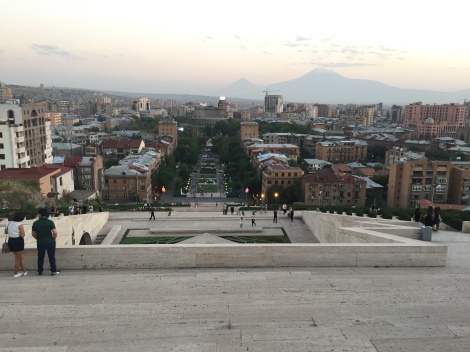
Mt. Ararat, nicknamed the Eternal Mountain, looms in the background of this sprawling metropolis of about 1.1 million people – a number that accounts for more than one-third of the entire countries’ population.
One of the iconic symbols of Armenia, Mt. Ararat is believed to be where Noah abandoned his famous Ark. It has an elevation of 5,134 meters and the first ascent wasn’t made until 1829. While it technically sits in Turkey (due to border re-alignment), Mt. Ararat is a symbol of Armenian identity and can be found on a number of bank notes and traditional artwork.

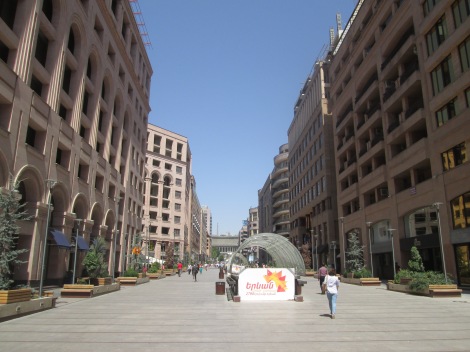
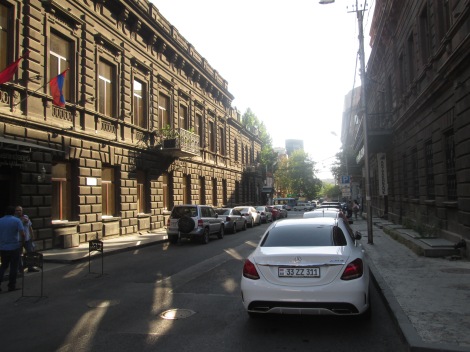
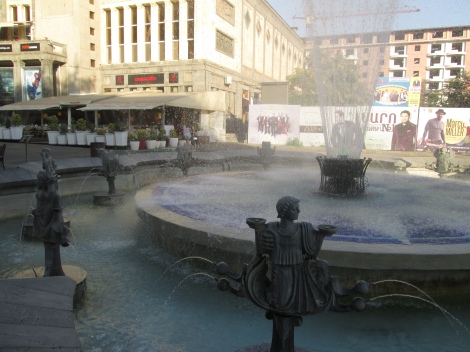
Averaging about 300 days of sun per year, Yerevan can get quite hot during the summer months as temperatures will climb up to 40ºC. However, it can also drop below 0 in January.
Yerevan has a fascinating history that blends many different cultures into the current day version of the city. Most recently, survivors of the Armenian genocide (I will talk about this more later..) flocked to the city after 1917 and Yerevan was named the capital shortly after. It rapidly expanded during the 20th century, under Soviet control, before the most recent period of modernization during the early 2000s.
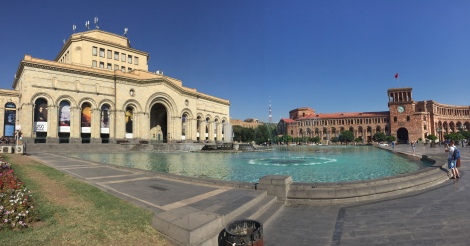
The main square in Yerevan, with the history museum to the left.
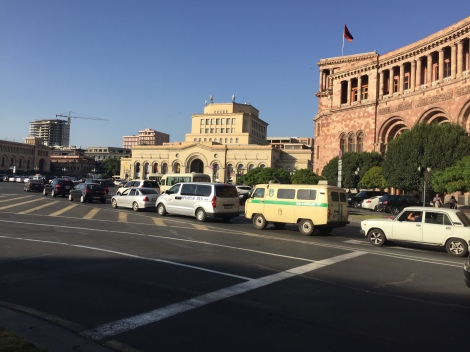
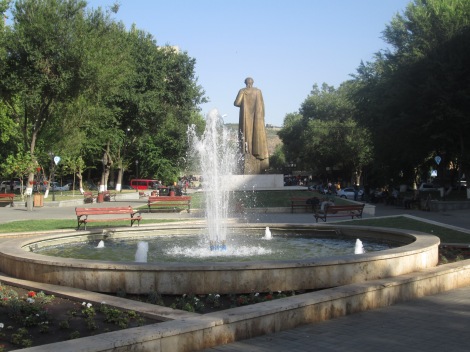

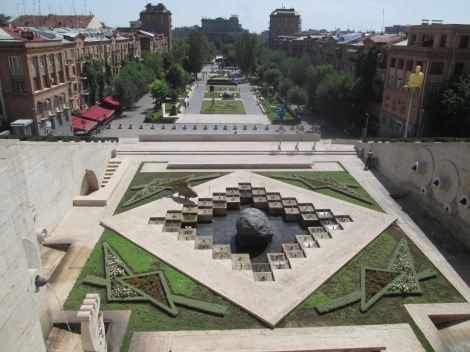
Yerevan has one metro line running through the city, containing 10 stations in total.
Good luck trying to read the names of the stops though…..

Like I said, Yerevan has a modern feel and is full of restaurants, markets and cafés. While spread out, the city is relatively walkable if you are in decent shape. If not, the metro is convenient and cost efficient.
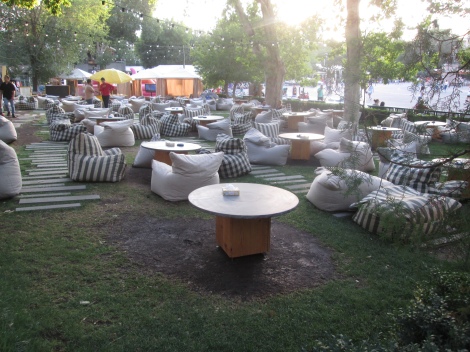
One of many cafes found in the downtown area.

Vernissage Market, the main market for souvenirs in Yerevan. Get ready to haggle and plan on spending at least an hour going through the stalls.
There is also a nice assortment of mosques and monasteries intertwined with more modern buildings, like the Yerevan Opera (below), opened in 1930.
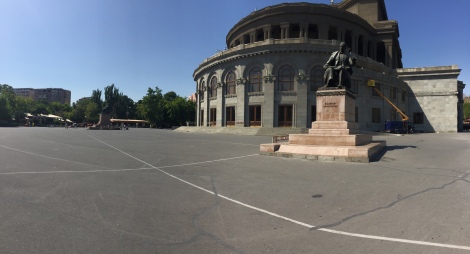

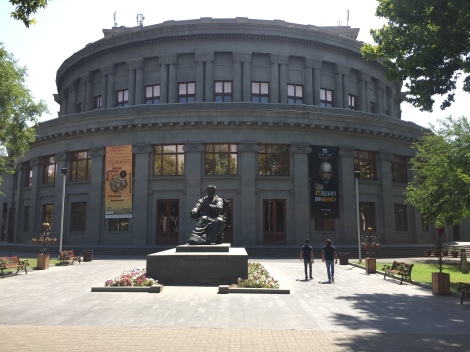
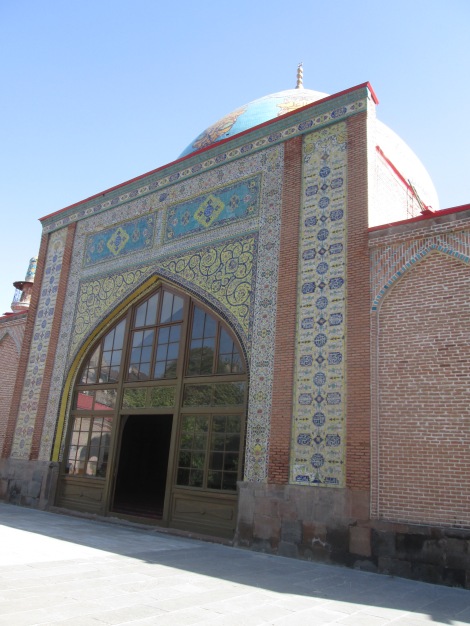
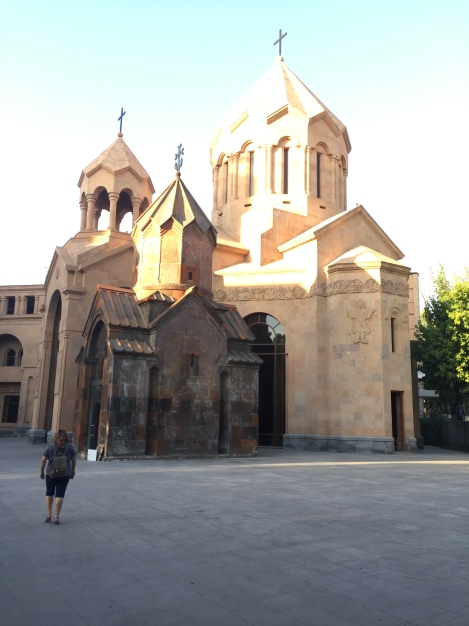
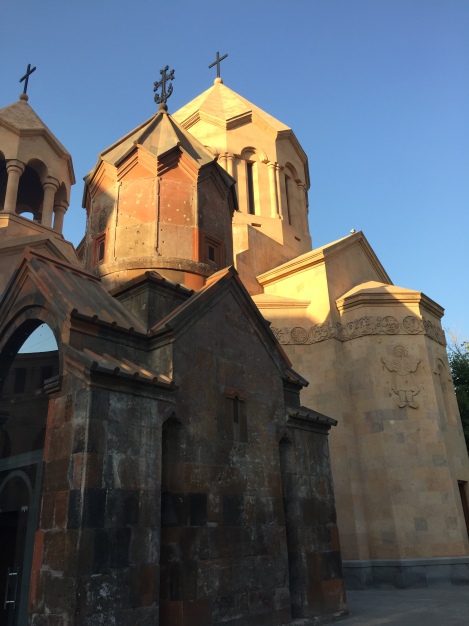
Outside of exploring the churches, monasteries and cafés, one of the most interesting places to visit in Yerevan is the Armenian Genocide Museum.


Encompassing an area over 2000 square meters, this museum contains old photos, books and documents from the time of the genocide. There are also 52 headings which follow a chronological order, outlining the atrocities from 1915-1917.
Each station provides places and dates along with horrific stories from survivors. Visitors will come away knowing far more about the Armenian Genocide than they did before.

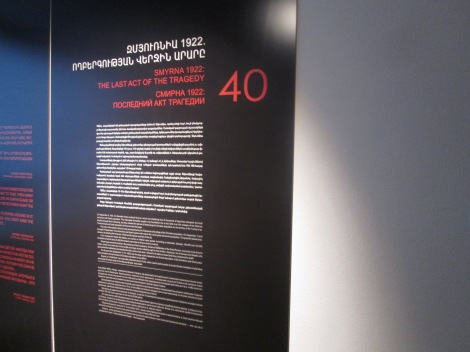
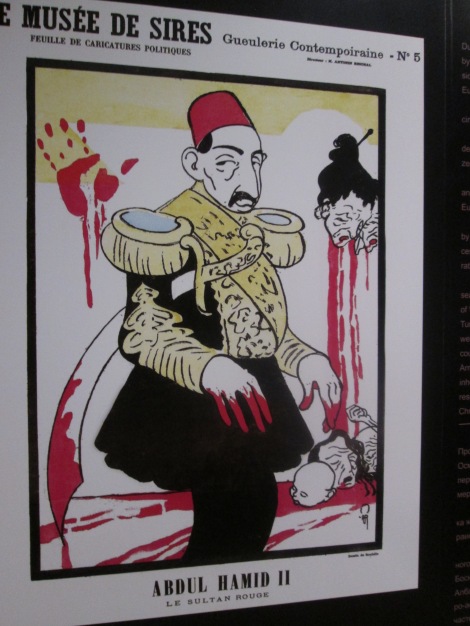
Stocked full of information, this museum will take visitors a few hours to explore. Exhibits are provided in Armenian, Russian, English, French and German and while donations are welcomed, the museum is free of charge. Make a point to come here!


Futhermore, the museum overlooks Yerevan, giving visitors a nice view of the surrounding landscape.

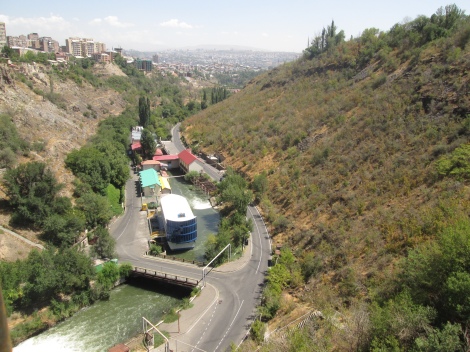

Next to the museum, this statue called Mother Arising out of the Ashes symbolizes the fight for survival and is a memorial for those who perished, survived and escaped the genocide.
As you can see, Yerevan is an interesting city that provides visitors with a variety of sites and learning experiences. It claims to be 29 years older than Rome and Armenia is home to a 6000 year-old winery, the oldest winery in the world!
Additionally, Arminian food is delicious! Dolma, borek and khorovats need to be tried along with the famous Armenian brandy.
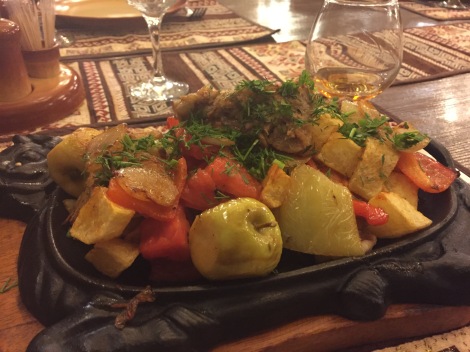

Called Lahmacun, this dish is often called ‘Armenian pizza’
You will also notice a lot of Armenian art displaying pomegranates (life) and grapes (beginning), which symbolize unity and togetherness.
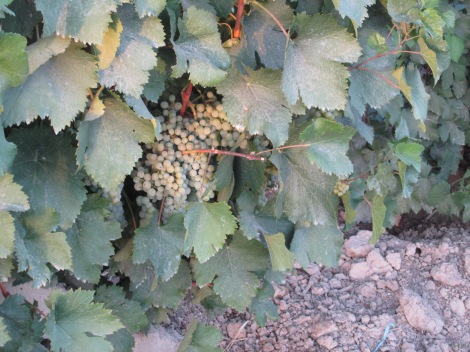
These, along with figs, peaches and watermelons are grown and sold in roadside stands throughout Armenia. You definitely won’t limit your fruit intake when you visit Yerevan!
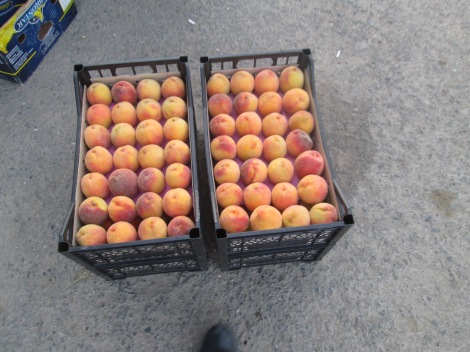
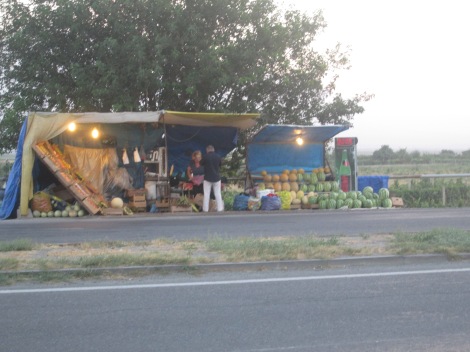
Armenia is a fascinating country and your introduction will undoubtedly start in Yerevan. While the language barrier is daunting at first, many locals are happy to try out their English. Additionally, most street signs are also printed in Latin, making it easier than you’d expect to get around.

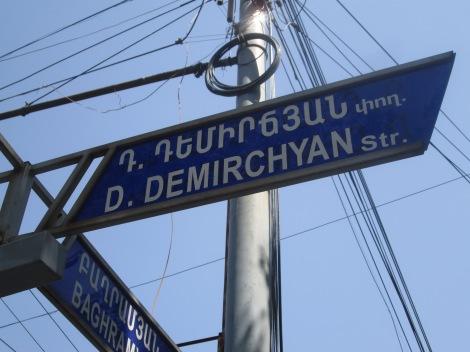
How to get here:
Yerevan is located 5-6 hours via marshrutka (small mini bus) from Tbilisi, Georgia and it is about a 5 hour drive from Tatev, Armenia in the south.
*Keep in mind*
Although Armenia borders Turkey and Azerbaijan, it is impossible to cross into these countries’ overland. You must first go to Georgia or Iran to catch a connection there.
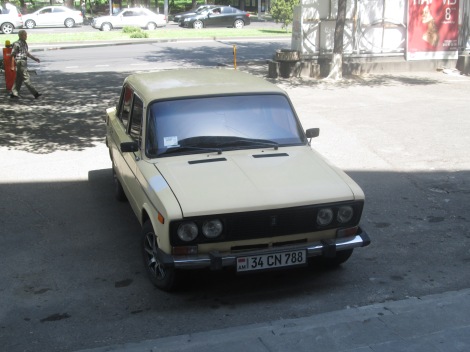
You will see these types of cars everywhere in Yerevan. Called, Lada, they are made in Russia.
Despite near extermination just a century ago, the citizens of Armenia remain resilient and hospitable. Tourists are greeted with a welcoming smile and the first nation to declare Christianity its official religion is definitely a spot to check out!
Shnorhakalutyun! (Thank you in Armenian)

Wow! That looks great. I knew that Yerevan was the capital and largest city in Armenia, but I never saw pictures of that city. That must have been fun being there.
LikeLiked by 1 person
Absolutely. I had never been to that area of the world before, so it was new and exciting! I would absolutely recommend visiting Armenia!
LikeLiked by 1 person
Sure thing. It must have been fun being there. I guess Armenia might be one of those underrated vacation destinations.
LikeLiked by 1 person
Yeah, I think Armenia and Georgia for sure!
LikeLiked by 1 person
I bet. I heard some good things about Georgia, too. Then again, several Americans down here always think of the state before the country. Sometimes when I talk geography, I may say Georgia the country or the technical title Republic of Georgia.
LikeLiked by 1 person
haha absolutely. Same up here in Canada..
LikeLiked by 1 person
Gotcha. Hahaha! I’m sure there could be confusion with other locales in Canada compared to other places. For example, there’s a city in New Jersey called New Brunswick which has nothing to do with that province of the same name.
LikeLiked by 1 person
Haha yeah I live near a ‘Portland’ as well..
LikeLiked by 1 person
There’s a Portland in Canada, too? Oh, wow! I didn’t know that.
LikeLiked by 1 person
Looks and sounds great. Love the photos too. Never been to Armenia but the history and buildings are fascinating.
LikeLiked by 2 people
Appreciate it Jonno! Yeah, it’s a fascinating area of the world for sure. Tons of history there!
LikeLiked by 1 person
Pingback: Tatev Monastery, Armenia | canadianglobetrotter·
Pingback: Tbilisi, Georgia | canadianglobetrotter·